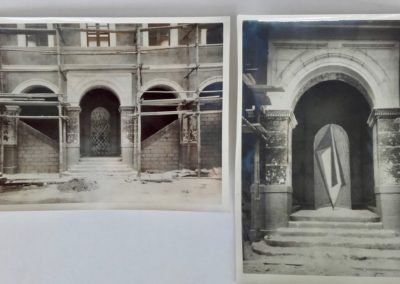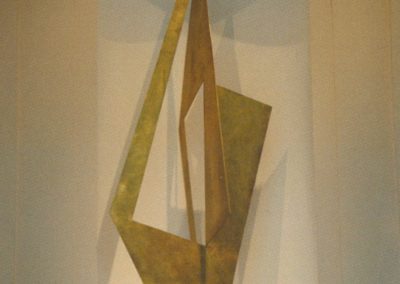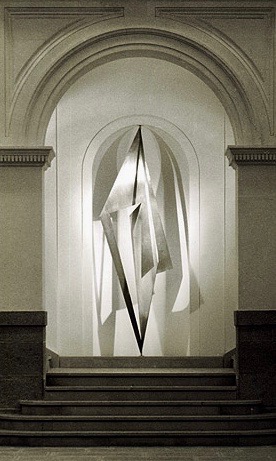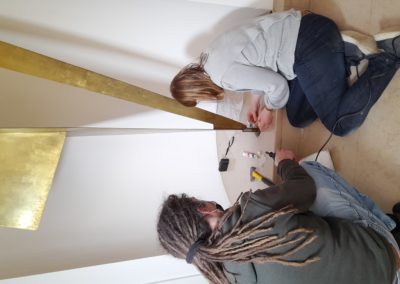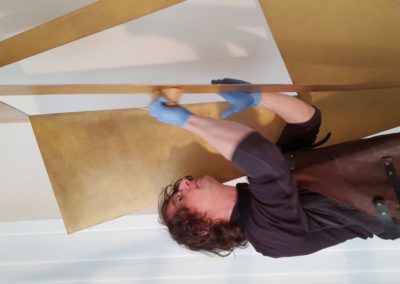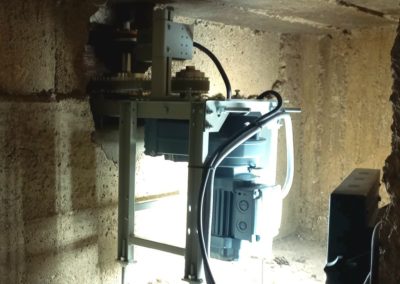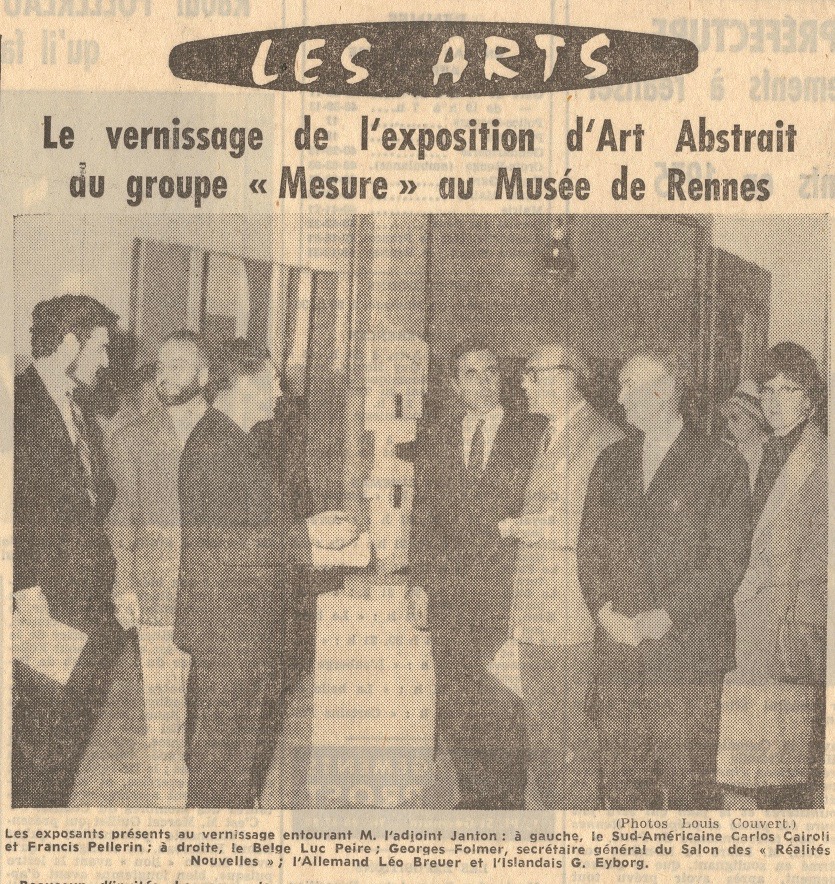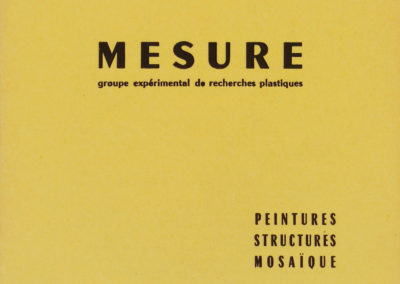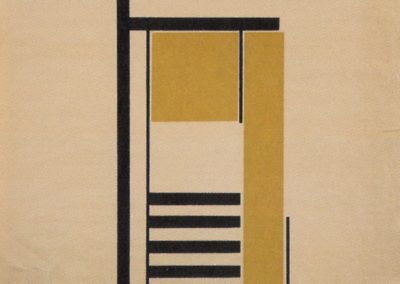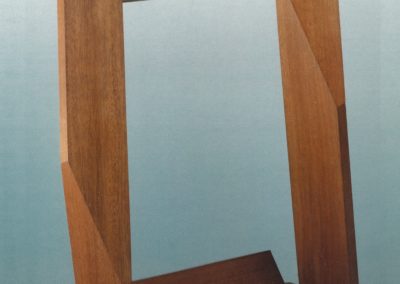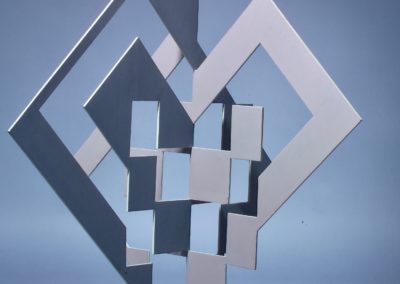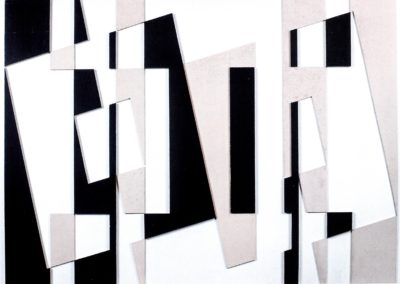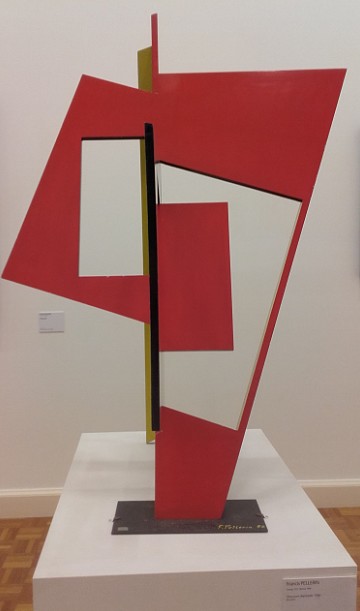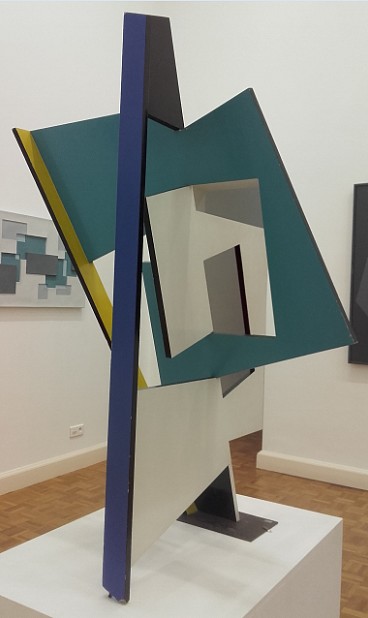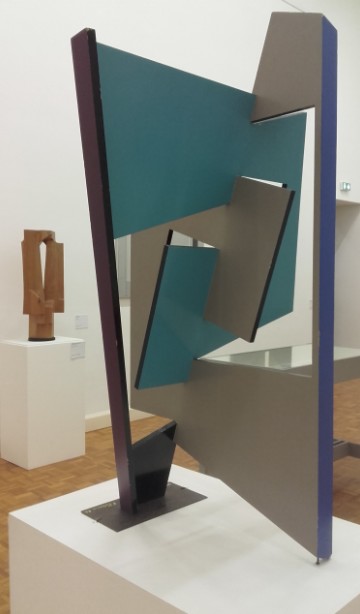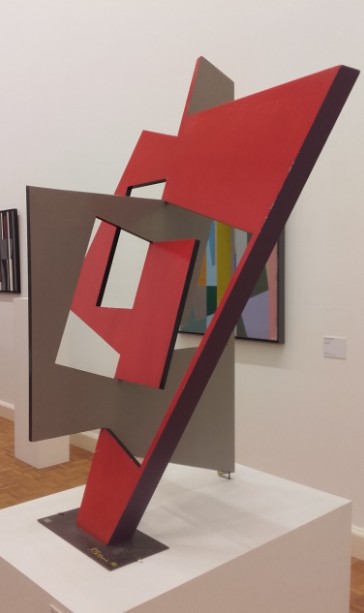Francis Pellerin: Geometric Abstract Art, Kinetic Art, and the Constructivist aesthetic at the Musée des Beaux-Arts de Rennes
Structure
Mobile structure
1956
Brass with motor
338 x 115 cm
The façade of the casino in Saint-Malo (1954) and the door, the Stations of the Cross, and the stained-glass window of the church of Saint Yves in Rennes (1956) mark Francis Pellerin’s departure from classical and figurative sculpture and the resolutely abstract direction he chose. Structure, however, most fully expresses this turning point, and its kinetic and geometric resolution. Displayed today in the alcove of the atrium of the Musée des Beaux-Arts de Rennes, the work is inspired by the aesthetic principles of art construit, Constructed Art.
Marie Berhaut, curator of the museum from 1949 to 1969, was instrumental in obtaining “a special loan to support the arts” from Rennes city council, as well as the agreement of Georges Salles, director of the Musées de France. On 1 April 1957, the museum reopened its doors to the public following a period of closure for restoration after the war. Francis Pellerin’s newly installed work caused a sensation, prompting René Massat to write in Les Lettres Françaises:
The Museum’s art of today has not been forgotten… I told you, this mobile is very much talked about here, and it deserves it.
Pellerin himself spoke of Structure in the following terms:
Marie Berhaut gave me absolute freedom in the conception of the work which has just been installed in the alcove of the museum atrium. In so doing, she created the conditions in which I could apply my artistic research at that time to the work and give her what she was hoping for without having actually expressed it… From an architectural perspective, why display a work such as this in a classical building? A marriage of reason would have introduced a statue in keeping with its context. Yet we united elements that were meant to be together and draw sustenance from their existence as forms. Giving shape to a sheet of polished metal represents nothing external to them. The sole purpose of its behaviour is to structure an architectural space, to become part of this space through movement. From the relationship between alcove and mobile arises the accidents of shadow and light which derive from the very nature of the piece, the shadows cast which are a harmonic link between the piece and the alcove, and the final movement which is a synergy of form, light and motion…
The Groupe Mesure
Francis Pellerin was a very active member of the Groupe Mesure, a group of plastic art experimentalists who aimed to generate discussion between painters, sculptors and architects, all of whom defined their work as abstract and geometric. The group was formed in 1960 under the initiative of geometric artists from the Salon des Réalités Nouvelles.
Pellerin’s involvement came about following his participation in the first Abstract Art Biennale in Bordeaux in 1957. Georges Folmer, secretary-general of the Salon des Réalités Nouvelles at the time, contacted the sculptor in 1960 with a request to send photographs of his work. He asked Pellerin to contribute a structure to the 1961 Salon, one that would form a coherent ensemble with three paintings by Auguste Herbin. Folmer also took the opportunity to ask Pellerin if Rennes would agree to show some Constructivist works on canvas, thus preparing the ground for moving the Salon des Réalités Nouvelles to the city.
On 30 June 1960, Francis Pellerin met with Marie Berhaut, curator of the Rennes Musée des Beaux-Arts, who approved the plan to exhibit a number of Salon des Réalités Nouvelles artists in February 1961. The Rennes municipal archives hold all the letters that passed between Marie Berhaut, Georges Folmer and Francis Pellerin. The correspondence reveals the intensity of the collaboration that made the first Groupe Mesure exhibition possible. The exhibition ran from 9 March to 30 April 1961, with an extension until 7 May 1961. It was the only exhibition by the group ever to be held in France.
The exhibition included works by Eyborg Guðmundsdóttir, MT Janikovski, Aurélie Nemours, Luc Peire, Roger François Thépot, Leo Breuer, Marcele Cahn, Georges Folmer, Jean Gorin, Pierre Martin Gueret, Martha Boto, Carlos Cairoli, Adolphe Cieslarczyk, Maxime Descombin, Gregorio Vardanega and Francis Pellerin, as well as two paintings by Auguste Herbin and one by František Kupka.
Francis Le Corbel wrote of Francis Pellerin in the periodical Arts, no. 817:
The powerful character of Francis Pellerin is the force to be reckoned with in the group. He is only showing three structures, yet these represent the culmination of several years’ research from which the students of the École des Beaux-Arts in Rennes have benefited. Picasso once stated that “a painting is a sum of destructions before becoming a sum of affirmations.” Never has a work of art better illustrated this phrase.
The Groupe Mesure statutes were drawn up on 19 March 1962. Pellerin would participate in their annual exhibitions, which were held outside France, until 1965.
Geometric Abstract Art group exhibitions in which Pellerin participated :
> Groupe Structure
- Bordeaux – 1956, 1957
- Toulon – 1960
> Salon de la Jeune Sculpture – 1960, 1961, 1962
> Salon des Réalités Nouvelles – 1961, 1962, 1964
> Groupe Mesure – 1961, 1962, 1963, 1964, 1965
Donations by Suzanne Pellerin
After the second exhibition at the Musée des Beaux-Arts de Rennes in 2005 (the first was held in 1969), and on the occasion of the New Year’s address by the mayor, Edmond Hervé, in 2007, Suzanne Pellerin explained:
This donation is an opportunity for me to thank the Council, those who have organised this wonderful exhibition; and to say thank you for the works by Francis Pellerin displayed in 24 public places in this beautiful city.
Laurence Imbernon, curator of the exhibition, wrote about Structure déployée, 1957, painted, assembled wood, 110 x 60 x 58 cm:
This sculpture was developed according to the same geometric and abstract principles as the mobile structure (in the atrium). Depending on the angle of the viewer, the formal perception of the piece is transformed. This quality is reinforced through the use of a palette of pure, non-illustrative colours… Francis Pellerin was sympathetic to monumental decorative works by Jean Gorin, Étienne Boethy and Félix Del Marle. He lost little time in positioning his abstract work in the Constructivist register of these artists
The archives of Pellerin’s atelier, held by the Archives de Rennes, show that the line structuring the work in acrylic on canvas (1988, untitled, 100 x 81 cm) was developed at the beginning of the 1950s. It is the line found in the paintings in the Grand Vaisseau series, a tribute to the writings of Kazimir Malevich (4 variations, oil on canvas, from the first geometric period; 13 variations, acrylic on canvas, from the second period).
Laurence Imbernon observed that:
The painting is structured with the same regulating lines that give energy to his sculptures. The tripartite format, common in the works of the first period, between 1956 and 1962, becomes more complex and will shortly disappear in the works completed between 1988 and 1998… Francis Pellerin takes from the Constructivists a use of colour that is never descriptive or imitative. Reduced here to shades of black and white and a palette of greys, colour reinforces the graphic and geometric structure of the composition.
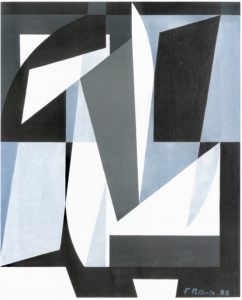
Acrylic on canvas, 1988 – Donated by Suzanne Pellerin
© Haude Pellerin
« Joy » a Roman creation, at the Villa Médicis.
Francis Pellerin uses wood from tree felling in the garden of the Villa.
He makes a well advanced sketch of this sculpture cast in bronze (1947). When he returns to Paris, he installs this sketch in his studio on Rue du Moulin de Beurre,
quartier Montparnasse district. This studio in Paris is closed because of an expropriation. The works found there are installed in his house-studios, rue Georges Sand, in Rennes (35).
In 1982, Francis Pellerin takes this sketch out into his garden and finishes its shore, with the gestures of wood sculptor.
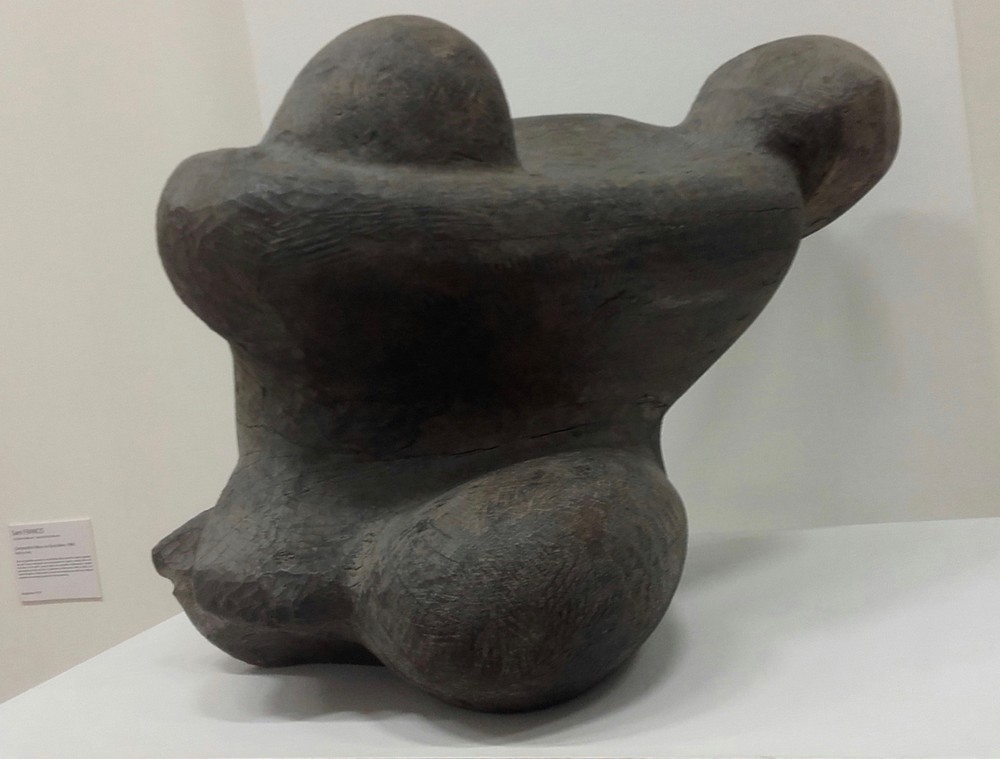
Joy – 1947
© Haude Pellerin
His son Gwenaël, photographs him in action. The négatives of this report is entrusted in 2025, to the Municipal Archives Rennes.
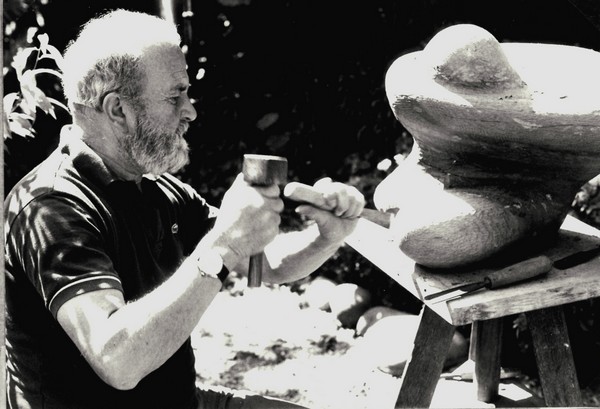
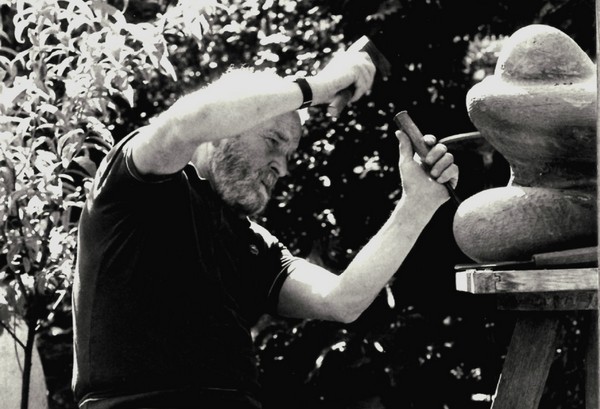
Gift from Friends of the Museum
A painting donated to the museum by the Société des Amis du Musée (chaired by Sylvie Blottière-Derrien) in December 2014. Oil on canvas, 1957, 130 x 89 cm. The work recalls the structures déployées.
This painting was rehung at the end of July 2022, following restauration by Armel Pellerin and reframing by Séverine Dufrost. Claire Lignereux, in charge of the modern and contemporary collections at the Musée des Beaux-Arts de Rennes since November 2021, describes it as follows:
The painting is an excellent example of Pellerin’s artistic exploration in the late 1950s: his process is constructivist, rigorous, giving the image its regulating linear structure. The geometric surfaces unfold and interlock, cadenced by the tension between the right-angled and oblique lines. The flat areas of colour are clean-cut, alternating between vivid and muted tones. This work has become a key piece in our abstract art collections and a focal point in the room devoted to the Groupe Mesure on the first floor of the museum.
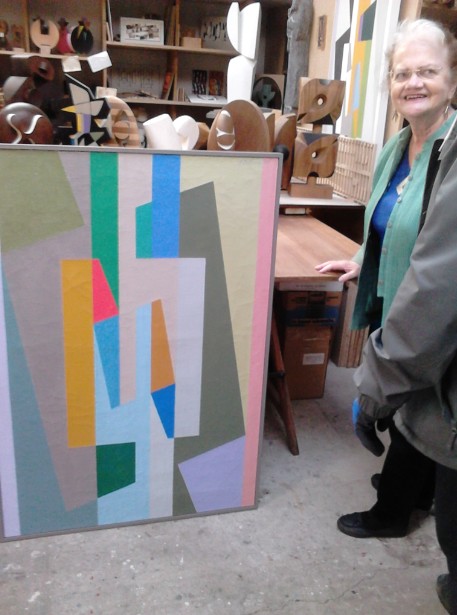
Sylvie Blottière
© Haude Pellerin
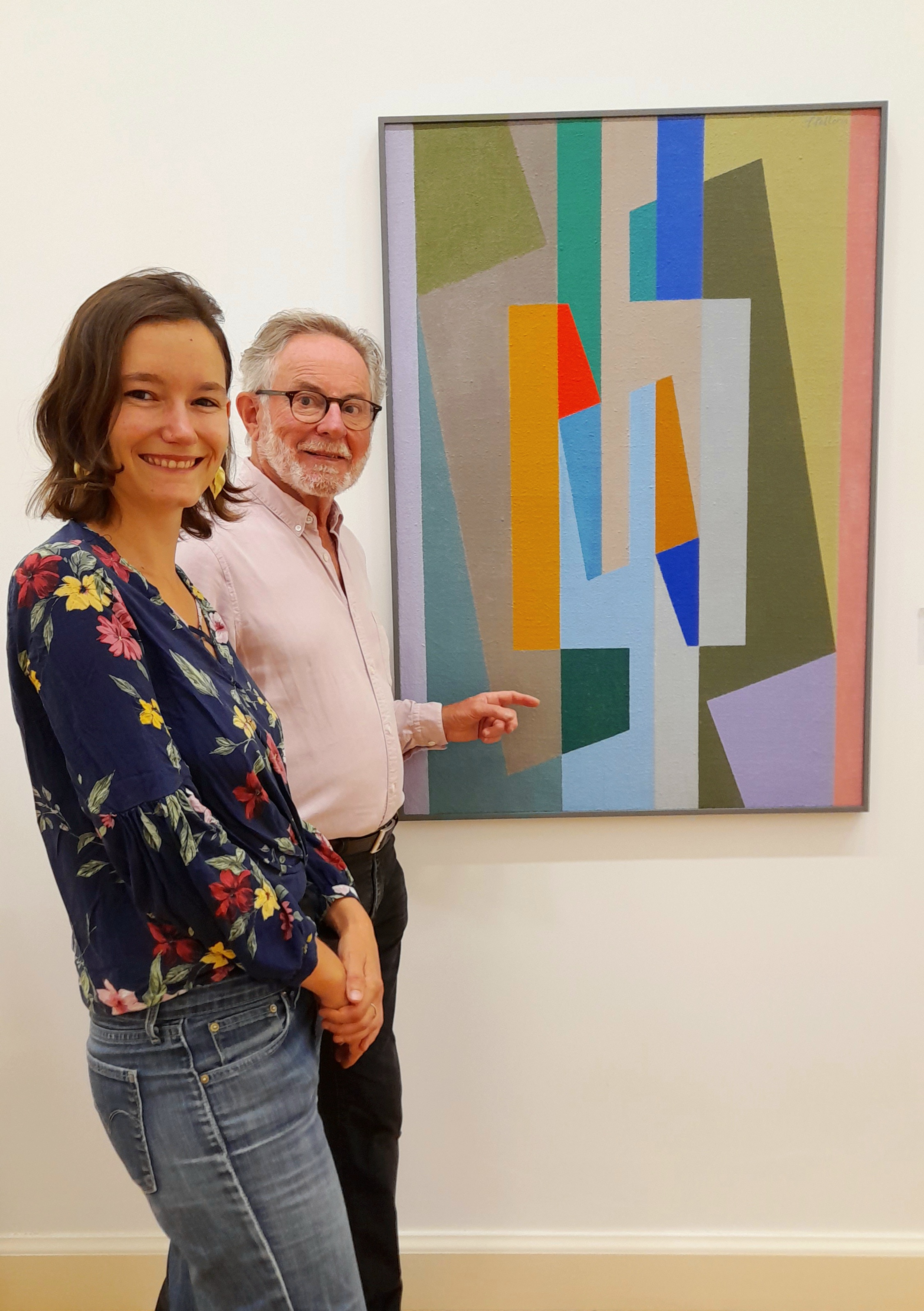
Claire Lignereux and Armel Pellerin
© Haude Pellerin
« Shelves of Shapes »
In 2021, the Museum (with the help of the Friends of the Museum) acquired a set of 175 models from the Francis Pellerin workshop; a set entitled « Shelves of Shapes ».
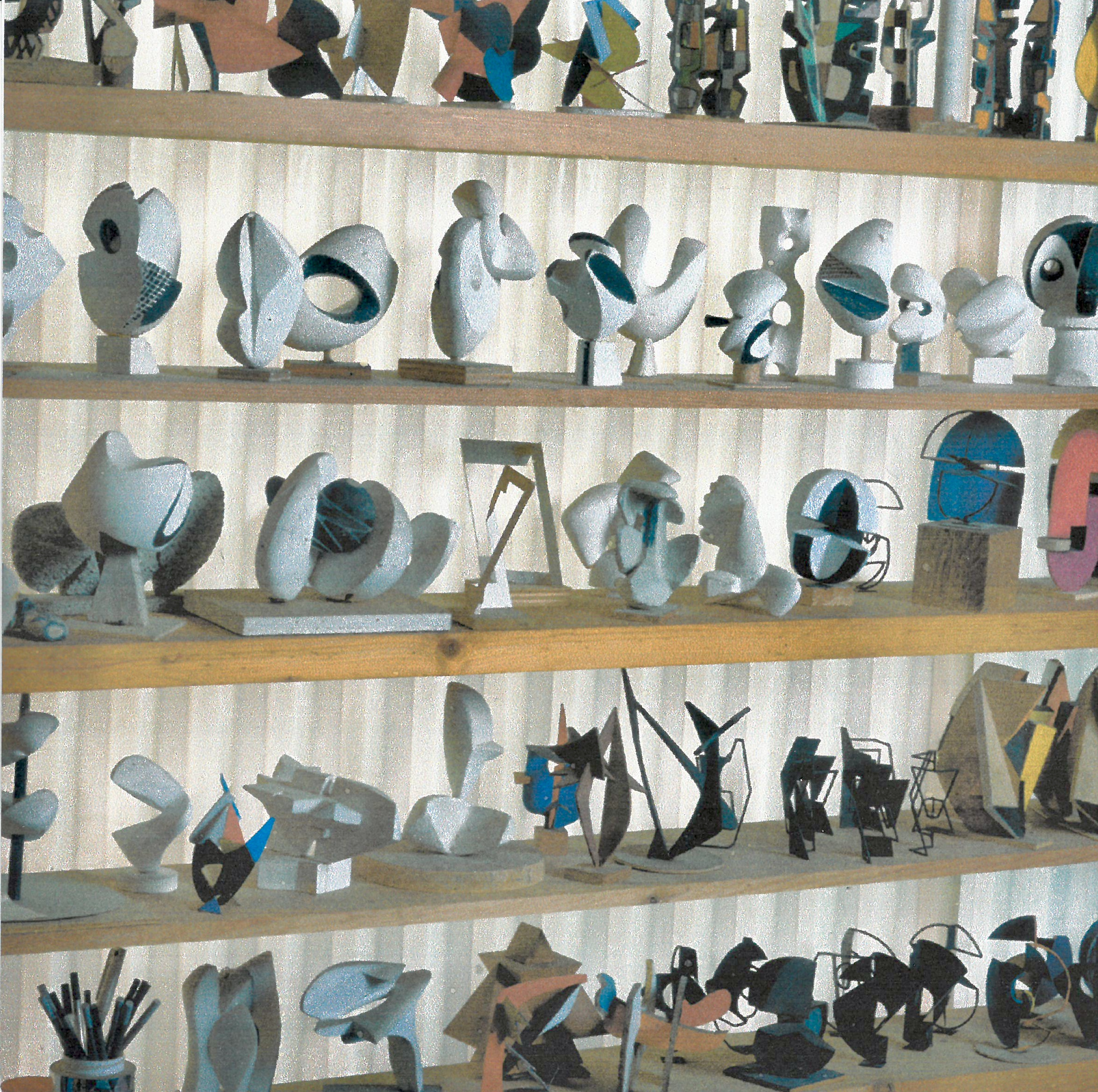
Patrick Merret
| For the opening of the branch of the Museum of Fine Arts in Rennes, on February 1, 2025, one of the residents of the Maurepas district chose to show one of the models of “L’Atelier des Formes” by Francis Pellerin. Her choice was photographed by Isabelle Arthuis. |
 |

